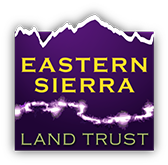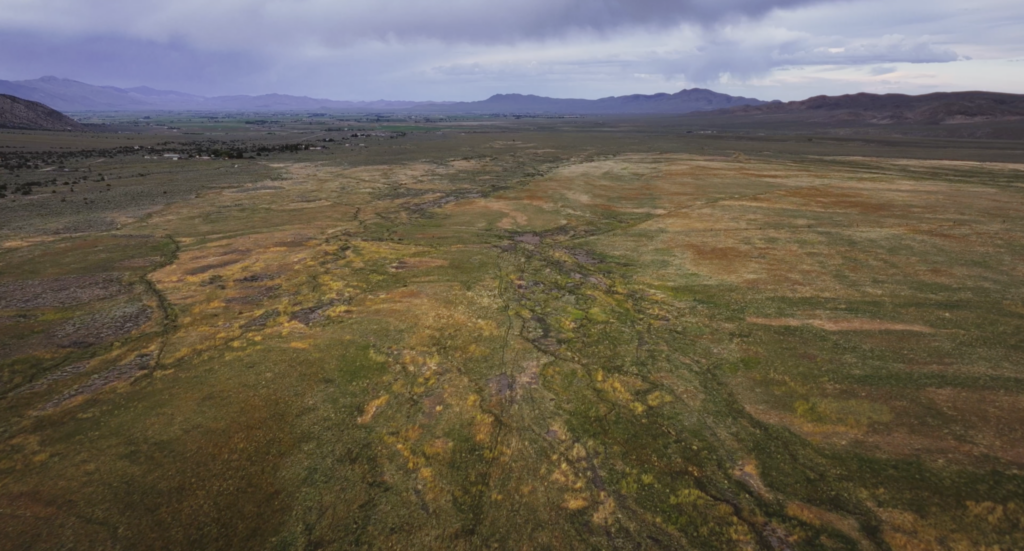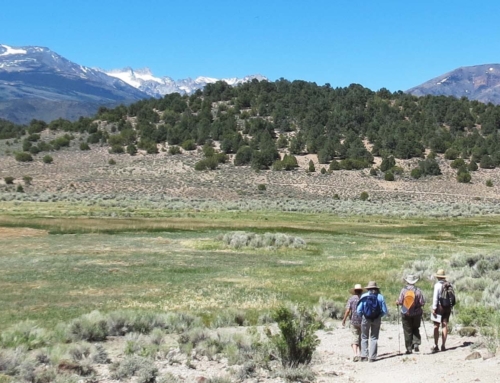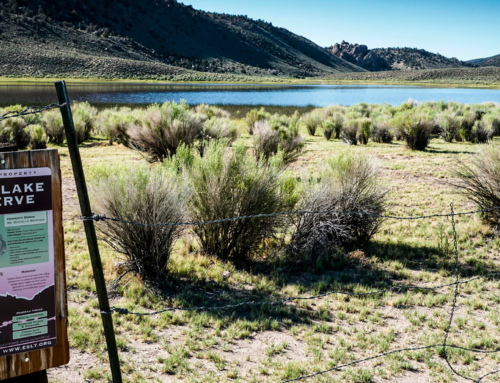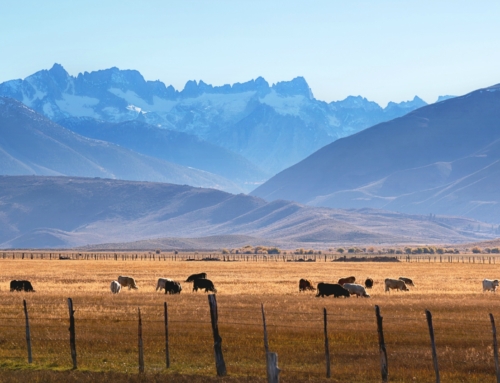Project Description
Desert Creek Ranch lies in the heart of Smith Valley, Nevada and became the first ever conservation easement held by Eastern Sierra Land Trust in Nevada. Thank you to our funding partners that made this project possible: the State of California Natural Resources Agency, and the Nevada Department of Wildlife.
Eastern Sierra Land Trust (ESLT) proudly announces the conservation of Desert Creek Ranch, a historic and ecologically significant ranch located in Smith Valley, Nevada. This marks the organization’s inaugural conservation project in Nevada.
A Milestone Conservation Project in Nevada
The quest to conserve Desert Creek Ranch has been a labor of love spanning several years. David Park, the landowner, reflecting on the journey, said, “We embarked on this path back in 2016. It’s been a blend of challenges, learning, and ultimately, success. Our commitment to the land and our perseverance have brought us here today.”
Funding was provided through the Livestock in Harmony with Bi-State Sage-Grouse project under USDA’s Regional Conservation Partnership Program (RCPP), which provided $7.2 million for the purchase of conservation and wetlands easements in Nevada and California. For the Desert Creek Ranch project, USDA’s Natural Resources Conservation Service (NRCS) provided $1.545 million under RCPP, the Nevada Department of Wildlife (NDOW) provided an additional $190,417 in funding, and the landowner also made a personal donation to the purchase of the easement. This funding partnership between ESLT, NRCS, NDOW and the landowner is a primary example of how Agricultural Land Easements (ALE) leverage local partnerships to match NRCS funding and local partners that are responsible for the long-term stewardship of the easement on working farms and ranches.
“Projects like this highlight the need for collaboration between federal, state, and non-government partners like ESLT to support landowners who want to maintain or enhance their land in a way beneficial to agriculture and/or the environment,” said Greg Becker, acting Nevada State Conservationist for NRCS.
Image by Dalton Paley.
Diverse Ecosystem & Historical Significance
Desert Creek Ranch is more than just a ranch; it’s a designated grassland of special environmental significance. The property is home to the Bi-State Sage Grouse (BSSG), a sagebrush steppe species of paramount ecological importance. Additionally, its proximity to the Humboldt-Toiyabe National Forest accentuates its role in conserving the biodiversity of the region. From mule deer to sage grouse, Desert Creek Ranch is a treasure trove of biodiversity.
The ranch, with Desert Creek running through it, has a rich history, deeply intertwined with the growth and development of Smith Valley.
Landowner at the Heart of Conservation – A Story Four Years in the Making
The journey to protect Desert Creek Ranch began four years ago. The landowner, David Park, a long-time Carson Valley resident, expressed his motivations:
“We have a deep history of ranching and have always wanted to continue this legacy. It seemed like the right thing for the ranch, especially given the vital role of water on this property. Preserving this land in perpetuity for agriculture and habitat for sage grouse is a perfect fit for the community, the Eastern Sierra, and for Park Ranch.”
“I am personally excited that the birds have a chance somewhere where they aren’t going to be bulldozed by building. We did our part to preserve the property as a habitat for sage grouse, and hopefully others will do the same and have the same intentions in moving forward in Western Nevada.”
“Ranching is my way of life. Without land and water, you can’t provide otherwise. Land is the key component to livestock, crops, and is something that I truly enjoy doing–raising and growing,” David emphasizes.
Central to this conservation success story is the landowner’s unwavering commitment. Emphasizing the landowner-focused approach, David Park, provided insights into the process and their aspirations for the conservation easement. “Where we sell our meat is a testament to our commitment to sustainable ranching. Every decision, every effort is for the long-term well-being of the land,” David noted.
Desert Creek Ranch holds senior water rights and plays a pivotal role in the Smith Valley ecosystem. Surface water from Desert Creek irrigates pastures, and the stored water from Lobdell Lake is released seasonally, both of which are essential to Bi-State Sage Grouse habitats. “If it wasn’t for the water, there wouldn’t be a ranch, and without the ranch, these birds wouldn’t thrive as they do today,” the landowner said. “When water gets diverted, it’s generally not beneficial to wildlife, but this is an incredible exception to the rule. These birds wouldn’t be here, certainly not in these numbers, without these irrigated meadows,” he continues.

Image by Dalton Paley.
Looking to the Future
While this conservation easement protects vital habitats, it also ensures that future generations will enjoy the ranch without the looming threat of development. Public lands near Desert Creek Ranch offer regional recreational draws like off-road activities, fishing, and camping, with parts of the easement located in the canyon’s recreational area.
For other landowners considering conservation, the landowner shared, “It’s a tool in the toolbox for agricultural operations. Every property is unique, but for us and Desert Creek Ranch, preserving this land was the perfect fit.”
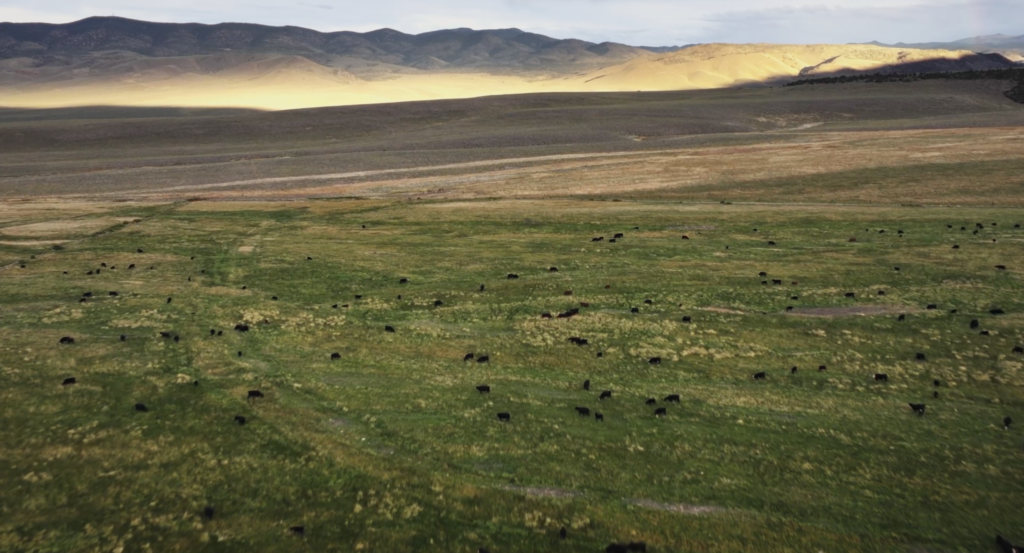
Image by Dalton Paley.
A Message for the Future
With Desert Creek Ranch, ESLT not only celebrates its first project in Nevada but also the first time RCPP funding had been used in Nevada to purchase an easement. This project exemplifies patience, persistence, and the essence of community collaboration.
Kay Ogden, ESLT ED/CEO shared, “This isn’t just about ESLT expanding its reach. It’s about celebrating the spirit of conservation, honoring the dedication of landowners like David, and setting a gold standard for future endeavors in Nevada.”
About Eastern Sierra Land Trust
Eastern Sierra Land Trust collaborates with willing landowners to safeguard vital lands in the Eastern Sierra for their scenic, agricultural, natural, recreational, historical, and watershed values. The inclusion of Desert Creek signifies ESLT’s commitment to expanding its horizons and championing diverse conservation causes.
For more information about Conservation Easements, please contact your local NRCS field office or visit the Nevada NRCS webpage at:
